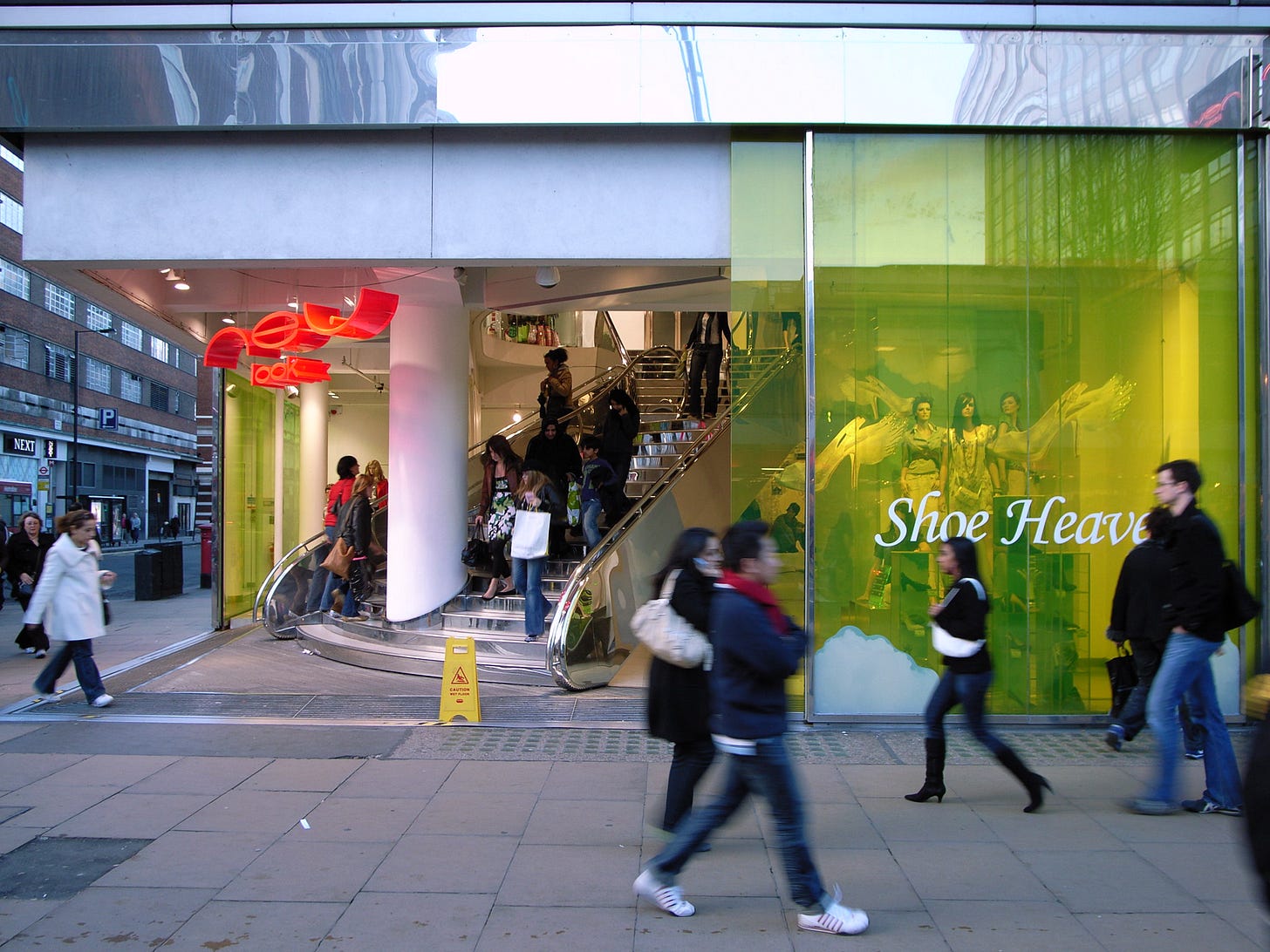The other day, I went shopping for some birthday presents. The area I was in didn’t have many independent shops, so I was at the mercy of the chains.
I expected the day to be pretty straightforward: I would pop into Boots for face creams and lipgloss, Oliver Bonas for the special pieces of jewellery stowed away in glass cabinets, Waterstones for new non-fiction releases, and a few others in between to look at fancy home bits. Yet hours later, I was still whirling around the shopping centre, looking for things that felt special and, most importantly, of good quality. In a place overflowing with choice, finding anything of actual value was a struggle.
Today, only a handful of high-street shops are ticking that box; others seem hollowed out by an insatiable need to extract profits. From clothes to jewellery, tech to books, despite “newer and better” releases, many products are rushed, and it shows. That afternoon, I went home empty-handed, but the experience left me with more than frustration; I haven’t stopped thinking about how most things are now manufactured to disintegrate or be quickly discarded, just to be bought again.
You can witness all of this on your local high street - or whatever is left of it. Go into a clothes shop and feel the items with your hands— the material is often flimsy, the stitching is off, there are no pockets, and nothing fits properly because it’s all hastily made to one shape. Shoes are the worst. Not only have functional things like arch support or waterproof materials been ditched, but they’re unreasonably expensive. This didn’t happen overnight, either. It’s been a slow decline, hard to notice at any one time. Look at the quality of mass-produced goods today versus ten years ago, and the contrast becomes clear.
We already know that a major driver of low-quality items is the speed at which they are made. Mainstream narratives on fast fashion maintain that consumers are driving this demand, as today people buy five times more clothing than they did in the 1980s. “The pressure to make more stuff, of course, lowers the quality of what’s being made, because the development and testing is just accelerated even more,” Matthew Bird, a professor of industrial design at the Rhode Island School of Design, told Vox in a long read on the same topic. To keep prices down and profits high, companies are cutting corners on the quality of materials used, as well as the workforce responsible for overseeing development and manufacturing. Yes, customers certainly play a role, but can they be blamed when they're up against relentless consumer engineering, such as constant advertising and planned obsolescence, all motivated by a need for increasing revenues?
It’s not just me who thinks this is bad. Retail experts regularly weigh in on this too. “The high street has been ravaged by greed, constant discounting, Black Friday, lack of decent leadership and a race to the bottom. Total overconsumption and overproduction. Nothing is created to actual demand or to sell out at full price,” Anna Woods, founder of Positive Retail, told Vogue Business. For example, when she started as an assistant buyer at Topshop 20 years ago, their target on European shoes was to make a 56 per cent margin and 70 per cent full-price sell-through. When she stopped working [for fashion retailers] three years ago, the target margins increased to 80 per cent with 15 per cent full-price sell-through. “Stores are planning for discounts. They are trapped,” she says. “Why does a garment come in at full price in January and then by June it’s worth a fraction of that to the customer and to the business, all to clear through it and pile more on top?”
This surely can't last. The cycle of producing and consuming ever-cheaper, lower-quality goods is unsustainable on every level — economically, environmentally, and psychologically. Sure, one could look at this through a positive lens. With a potential collapse of the fast-fashion high street, there could be an opportunity to rebuild something better. Recently, independent retailers and food outlets have stepped into the gaps left by chain stores on the UK’s high streets, retail parks and shopping centres, driving the first rise in their numbers in four years. Imagine a resurgence in local craftsmanship and ethical businesses driving out multinationals. Imagine a high street not made up of vape and betting shops!
My pessimism is driven by the fact I’m seeing this pattern repeat in other sectors I’m more familiar with, like journalism and publishing. And I can’t really see a way out. I might expand on this in another post, but the complete gutting of important editorial processes favouring devalued but more frequent “content” has broken me. It’s a grim reflection of a broader trend — where depth is sacrificed for speed, substance for clicks, quality for quantity. There is some hope in the rise of small-scale, “radical” operations and independent storytellers who manage to survive, but they’re doing so while swimming against a strong tide. How do you turn the tide?
Thanks for reading windowsill. You can subscribe for free if you haven’t already.
What I’ve been reading this week:
By the River: Essays from the Water’s Edge. Niellah Arboine, who I worked with at gal-dem, contributed an essay to this collection. It’s a really beautiful book, full of incredible nature writing, which has been more of my jam lately.
I’ve been reading Shon Faye’s Substack archive, whose writing is just so good. I enjoyed the latest essay on her relationship with driving. Can’t wait for her new book out next year!


